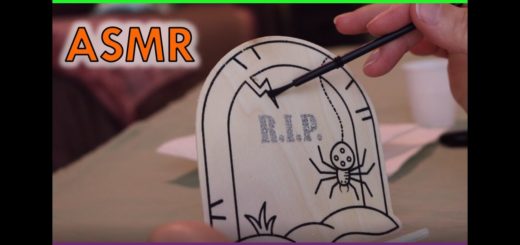The Unlikely ASMR Hero of… Camp Stoves?
[ad_1]
Driving south from Salt Lake City, I’m nervous about meeting Steve in person.
He lives in Utah’s Sanpete Valley, an agricultural swath between the San Pitch mountains to the west and the Wasatch Plateau to the east. The landscape is studded with scores of long white barns. Turns out they’re packed with turkeys. This part of Utah isn’t just Firebox Steve country. It’s also the turkey-ranching capital of the state.
I’ve brought a fly rod, waders, and not much else. The plan is to head for the mountains and go camping. “I really want to catch a fish and cook it for you,” Steve texted me just before I left. “That’s the iconic Firebox meal.”
All this time, I’d been thinking of Steve as a brawny Paul Bunyan with a frying pan. But when we shake hands outside his house soon after I pull up, I discover that he’s no bigger than I am—which is to say, average. I also imagined Steve as the strong, silent type, someone Sam Shepard might have played. Instead, I find myself facing a garrulous, funny, slightly frazzled 51-year-old in a plaid shirt and sandals, trying to feed a bottle of milk to a baby goat. He and his wife, Jessica, share their split-level house with his father, three kids, four cats, two dogs, assorted chickens, and two goats.
The goats are an interesting addition. Steve has to find new gimmicks to satisfy YouTube’s implacable algorithms, which require constant injections of fresh, attention-grabbing content. Untested destinations, surprising meals, unexpected supporting characters, and goats—Steve tries them all. He recently posted videos filmed on a beach in Hawaii during a vacation with his wife. In 2018, he slow-roasted a hunk of beef for seven hours, and the video got 5.6 million views. Steve’s two dogs are audience favorites. His growing kids draw positive comments, as do his parenting skills. Now he’s training baby goats to join the troupe as pets and pack animals—and a new source of comic relief.
I buy into what I see as the Firebox philosophy, a life-altering Weltanschauung. If I follow his simple instructions and use his gear, I will become happier. Calmer. More Steve-like.
Steve loves to tinker, so his home has a Rube Goldberg vibe. He repurposed a bike shed into a goat stable; he turned one side of the house into a movie screen for cartoons, beamed from an outdoor video projector. His whole family roasts hot dogs in a fire pit made from the rusted remains of an industrial clothes dryer.
Steve is a former car mechanic and an unrepentant motorhead. For his automotively inclined followers, the videos feature various interesting vehicles that he collects and restores. I recognize the 1986 VW Vanagon in the driveway, along with the 2003 white Toyota Tundra. Both appear in his camping videos. I ask about the 1997 Toyota T100 with a diesel upgrade, a YouTube fan favorite. It’s in the shop.
Steve has joined the ranks of internet celebrities—he’s a figure who fans know intimately, or think they do. Encountering the trucks, the menagerie, the patient wife and towheaded kids—it’s like going to a New York diner and running into the cast of Seinfeld, strangely familiar and startling at the same time.
Earlier, when we were texting back and forth, the banter and conversation had come easily. Steve said this was one of the benefits of internet fame. “You can kind of see how we already have somewhat of a relationship because of you watching my videos. That’s how it is with the customers on my website. They already know me in a way. And I think of them as friends, because they are the ones making it all work.”
But fame can get a little weird. A cop recently pulled Steve over on an empty mountain road.
“You lost?” he asked.
“No,” Steve replied, wondering what on earth he’d done. “Why?”
The cop confessed: He’d recognized Steve’s T100. He just wanted an excuse to say hi. “I’ve watched all your videos!” he blurted.
I know the feeling.
The next morning, Steve pulls up in the Tundra, loaded with fishing rods, hammocks, packs, sleeping pads, down quilts, camp chairs—two of everything, including the dogs, Ash and Juniper. Also, a large cooler, a backup battery power supply (just in case), a compressor (you never know), a string of lights, a rooftop tent (if we decide to stay with the truck), and a box packed with cooking gear. I load my stuff and we head south. Our goal is to find a cluster of three mountain lakes, unfamiliar to Steve, that a local fishing guide assured him are full of fish but not people.
Steve’s videos tend to alternate between austere, minimalist solo treks and rambunctious truck-camping expeditions with family and friends. Some of his more abstemious followers scoff at the luxuriousness of his car-camping style.
“They say, ‘You took all that gear out there? That’s not survival!’” he laughs, nudging away the dogs, who keep poking their noses into the front seat for a better view. “I’m a believer in comfy camping. I like to be comfortable! Some people believe you should go out there with nothing but your BVDs and a pocketknife.”
But when Steve takes the pared-down route—as he does in classics like “Solo Backpacking and Trout Fishing with Dogs and Pack Goats” and “Backpack Camping High Mountain Lakes for Trout Dinners with My Dog Ash!”—he puts most ultralight campers to shame. He carries a Nano, an anodized Firebox pan, a five-foot spinning rod, a rain poncho that doubles as a tarp, and that’s pretty much it. He brings a bit of food but no water, just a filter. He doesn’t bother with a tent. The dog carries his own chow in a saddle pack.
“For some people, camping is all about the hiking,” Steve says. “They love the workout, they love pushing themselves, they love getting a lot of miles in every day. For me it’s the destination. And part of enjoying the place for me is cooking.”
Steve is a bit of a foodie, as is his wife. They both worked at a restaurant in Park City for several years. Good food around the fire, in his view, is an essential part of the camping experience. But cooking seriously good meals over an unruly campfire is difficult. Steve’s stoves, however, are versatile enough to make it possible, even for backpackers—and they fit with the leave-no-trace ethic of modern campers.
“Fire is the key,” he explains as we pass a sign for Fish Lake National Forest. “Have you ever sat around a fire with someone you’ve known for years, but this particular night you learn so much more about them and become so much closer as friends? People are more themselves when they’re camping. If you really want to get to know someone, go backpacking with them.”
I recently read Harvard anthropologist Richard Wrangham’s Catching Fire: How Cooking Made Us Human. He more or less argues the same thing. “We humans are the cooking apes,” Wrangham writes, “the creatures of the flame.” I’m not saying Steve should be teaching anthropology at Harvard. But he did figure this out on his own.
[ad_2]
Source by [author_name]














